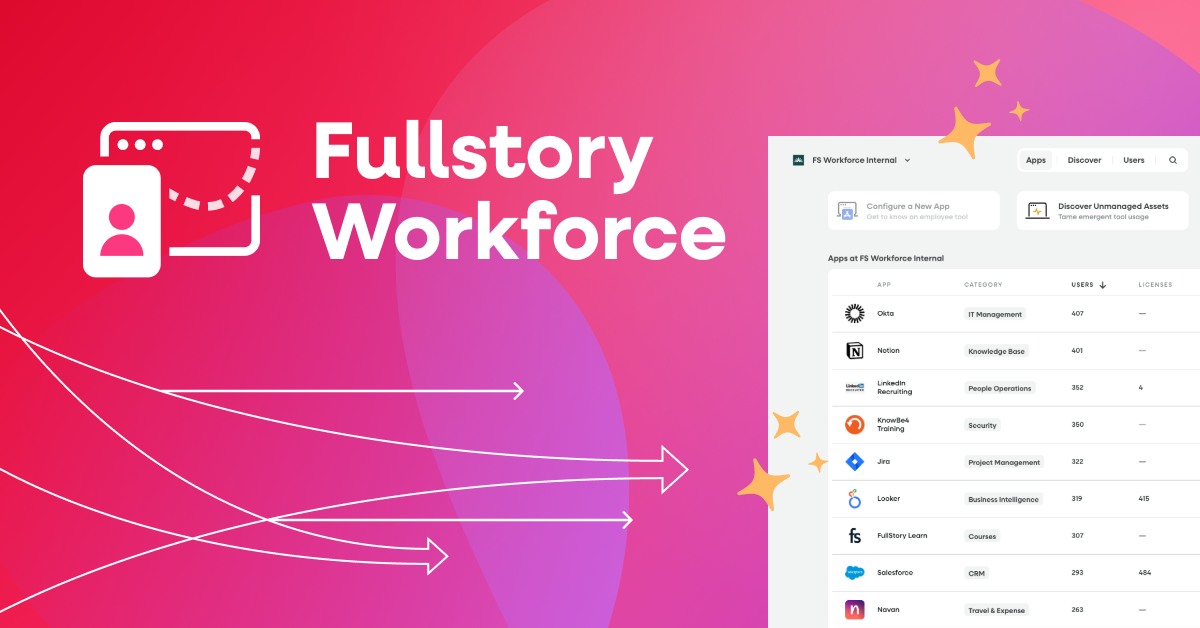At times, product management can get hyper-focused on building features and lose focus on establishing relationships across the company.
Features are a huge part of what makes customers happy. But there are things that may fall through the cracks without a little teamwork.
This is where cross-functional collaboration can become the glue that holds teams and products together.
Today we ask the tough questions about cross-functional collaboration and reveal the power of building relationships. Here are the questions we’ll investigate:
What does traditional product management look like?
What departmental skills work well cross-functionally?
What’s the best way to collaboratively communicate with teams?
How has data enabled cross-functional collaboration?
What does traditional product management look like?
Product management is a cross-functional role by nature.
In many organizations, product managers (PM) don't have a full team reporting to them. They get tasks done through the influence of other people working together across the organization. A PM typically owns a specific product, vertical, or line of products, and has a small cluster of team members as frequent collaborators.
Working outside of these departments essentially forces product management to think beyond their core team of design and engineering, and more about sales and product marketing.
What departmental skills work well cross-functionally?
There are a handful of skills to look for in a product manager that are needed to work well across the team:
A solid technical foundation. A product manager needs to be able to converse on a high level with engineers and functional designers—plus help explain technical nuance to non-technical stakeholders.
Influence-driven leadership. A skilled product manager has the ability to influence the organization without a ton of formal authority.
A customer-driven mindset. A product manager has to have a “spidey sense” of what a well-designed and built product is from a customer standpoint.
In product management, it can be a challenge to break out of the silo of your own group. Inevitably, you have to loop the entire team in on new features and functionalities rolling out. The marketing and sales teams need to be educated on what is being built and when it's going to roll out to customers.
Accordingly, balancing time spent on the creation of features and building relationships around the organization is critical.
Want to take your digital experience to the next level? Let’s chat.
Request your personalized demo of the Fullstory Digital Experience Intelligence platform.
What’s the best way to collaboratively communicate with teams?
Product managers are constantly getting feedback from customer-facing teams about what's resonating with customers and ultimately what they want to see in the product. To collaboratively communicate with teams, it’s important to establish a clear product roadmap so teams can communicate with each other and with external parties.
There’s no doubt about it—collaborative communication is clear communication.
Here are some ways to break the mold with cross-functional peers, even across globally dispersed teams:
Jump into a sales call
Read customer reviews
Join a product marketing exercise
Listen in on a design session
How has data enabled cross-functional collaboration?
Data acts as a common language that fosters collaboration among teams, driving clear and effective decision-making.
Instead of being a data-driven organization, it can be more of a data-informed organization—understanding how to use data to relate to customers.
When building products, a great democratizer is to have everybody clearly understand and articulate what the problem is. Most of the time, the problem can be solved with a set of data.
With a behavioral data platform like Fullstory, you can view customer sessions with Session Replay, and product, engineering, and UX teams will get total visibility into why customers interact the way they do.
Turn up the volume on your user behavior data.
See Fullstory’s behavioral data platform for yourself. Get Fullstory for free — for as long as you'd like.



